Vorwarnschlag – or signalling the arrival of the hour
This post was written by James Nye
A few of us travelled to Transylvania, Romania, in early March 2025. We were hosted by a local contact and friend, Dragoș Poponea, who guided us around an amazing array of fortified Transylvanian Saxon churches, often equipped with turret clocks from makers in Germany or the former Austro-Hungarian Empire (e.g. at Biertan, see image below).
Dragoș has the care of many of these church clocks, a huge task in a region where the Saxon population largely abandoned their long-term homelands in the wake of the 1989 revolution. Communities that could once purchase a top-of-the-range Mannhardt ‘freischwinger’ clock from Munich (or similar) have disappeared, and the resources to maintain such wonderful devices are now scarce.
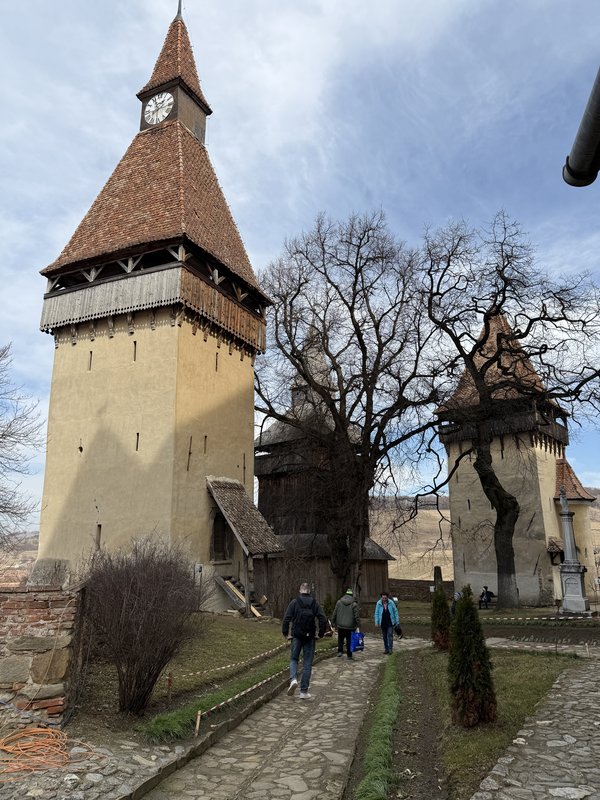
Climbing around dusty towers and getting ourselves magnificently filthy, we were delighted to discover something new to all of us. Indeed, even for our friends who are experts in Germanic turret clock horology, this was something perhaps heard of, but not witnessed.
In a handful of churches, Dragoș opened our eyes to hour-striking turret clocks, with a third train that did not strike the quarters but instead provided a warning of the impending hour.
In Germanic dialects, this train provides a ‘vorschlag’, or ‘weckschlag’, or perhaps most accurately ‘vorwarnschlag’, which we might translate as ‘forewarning alarm’. Prior to knowing the Germanic terminology, the British team landed upon ‘hour-signalling’ to describe the feature.
Just before the hour, this ‘hour signalling train’ is let off. By one of several different techniques it is designed to make a bell strike rapidly. An alarm call, effectively. The end of the alarm leads to the hour-striking train being let off, which will then sound on a much larger and deeper bell. The function is simple. ‘Pay attention everyone! We are about to sound the hour. Listen up so you count the correct number!’
There are variants in the way the alarm call is achieved. One type involves using two hammers to strike a fixed bell, while the other swings a smaller bell so that its clapper operates.
With the fixed bell type, one very clever arrangement involves just one pinwheel, which acts on a two-part lifting lever (e.g. at Roșia).
The first part of the lever to be lifted will begin to lift one hammer, but will also, with a small mechanical delay, lift the second part of the lever, which is connected to the other hammer.
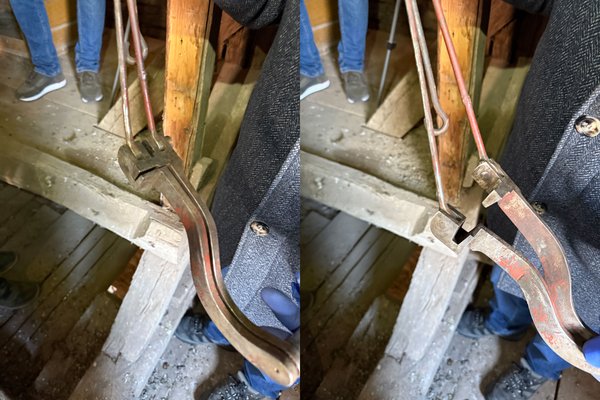
Since the two hammers have been lifted to different heights, when they are released they can strike the same bell (even the hour bell), but with successive blows.
With the swinging bell type, the arbor on which the bell is mounted can be swung to and fro by wires attached at the ends of a cross-piece fixed to the arbor.
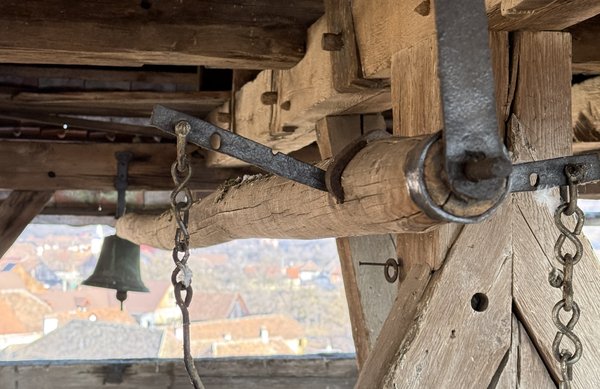
The two hammers can be actuated by a double pinwheel with two sets of lifting pins acting on two lifting levers, one for each hammer (e.g. at Cincșor).
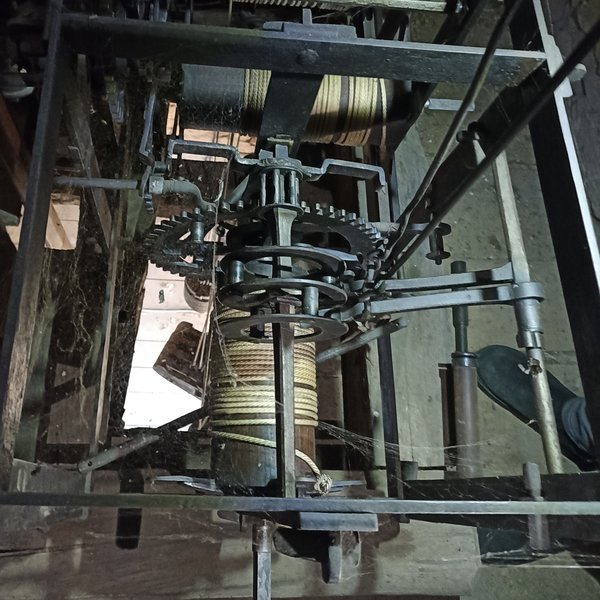
However, in a more elegant arrangement, the circular motion of a wheel is converted, via a crank and forked lever, to a reciprocating action, thus pulling the two wires successively to swing the small bell (e.g. at Șelimbăr). For a video, click here.
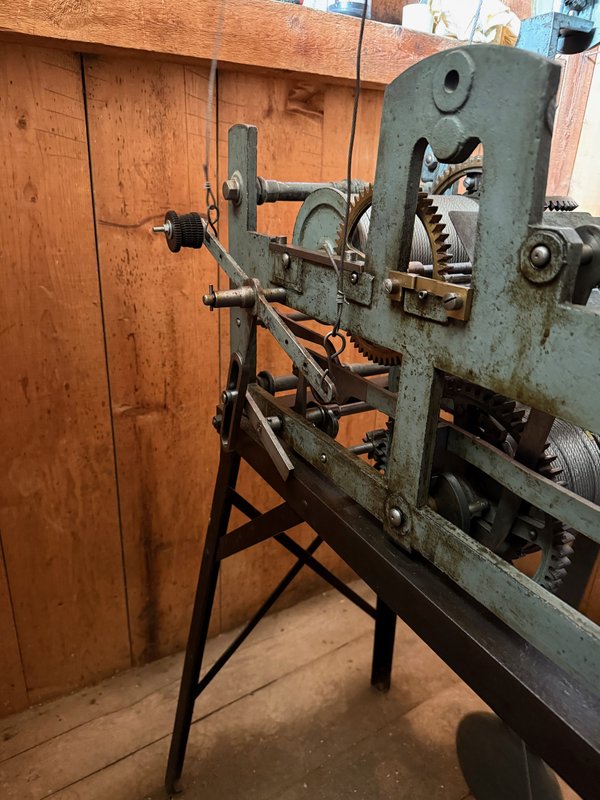
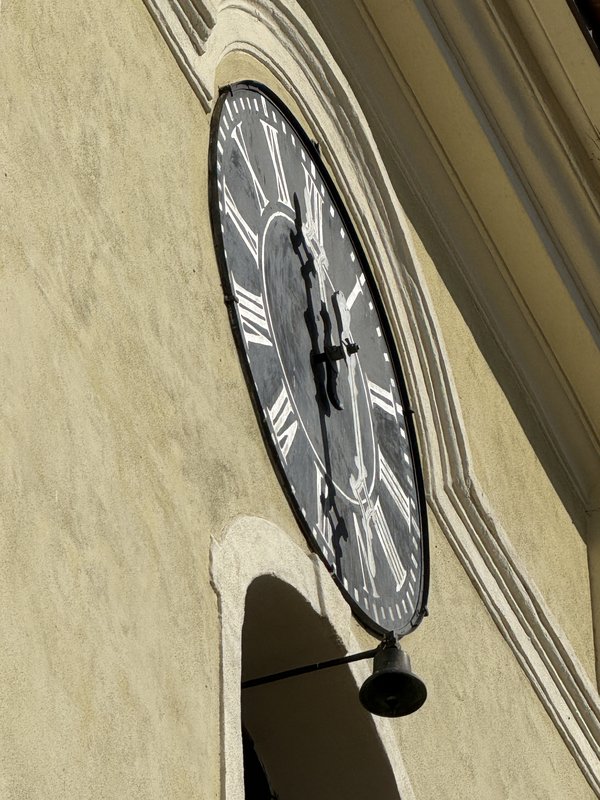
There may well be more variants. All of this was very new to us, and hugely interesting. There is clearly a strong tradition in the rural and agricultural Transylvanian Saxon region to signal to the population that the hour is coming.
The system is reminiscent of the idea employed in clocks from the Comptoise region of eastern France where the hour is struck twice, two minutes apart, to give the listener a chance to ‘hear again’ the hour, but the Transylvanian ‘hour signalling’ surely provides a clearer message.
It’s about time we learned a bit more about such a sensible tradition.